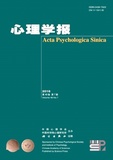As the primary caregiver, mothers have the most frequent interactions with children and display the most significant influence on children’s development. If mothers experience intense life event stress, they may create a stressful environment for their children’s early development. Living in such a developmental environment raises children’s risk of behavior problems in later childhood. Regarding the predictive effects of maternal stress on child outcomes, two compensatory models are differentiated in previous research: one is the direct effect model, which emphasizes on the direct impact of parenting stress on children’s maladjustment; and the other one is the indirect effect model, which focuses on the mediating roles of parenting practices and child self-regulation in the associations between parenting stress and child behavioral problems. However, in contemporary Chinese society, urban mothers face different sources of stress in their daily life. Maternal life event stress represents a more comprehensive and ecologically-validated assessment of maternal stress in the modern China, than maternal parenting stress assessed solely. But it is still unclear that whether those models about parenting stress are applicable to maternal life event stress. Based on Bronfenbrenner’s bioecological theory, we focused on the direct and indirect effects of maternal life event stress throughout infancy and toddlerhood on child behavioral problems at preschool in this longitudinal study. Three research questions were examined: 1) Which life events are the main stressors for urban mothers during their children’s infancy and toddlerhood periods; 2) Does maternal life event stress in these periods exert a long-term direct effect on preschoolers’ behavioral problems; 3) Does maternal life event stress also impact preschoolers’ behavioral problems through parenting practices and children’s self-regulation?
107 families (50 boys and 57 girls) were recruited from the local communities and child care clinics in urban areas of Beijing. During this five-year longitudinal study, questionnaires were distributed to the mothers at five waves of assessments. At 9, 14, 25, and 38 months, data on maternal life event stress were collected through maternal reports on the Life Event Scale. When children were 61 months, mothers rated children’s behavioral problems and prosocial behaviors by the Strengths and Difficulties Questionnaire and child effortful control by the Children’s Behavior Questionnaire-Short Form, and reported their positive parenting practices on the Alabama Parenting Questionnaire.
The results showed that the most frequent negative life events included housing shortage, stress from work and studying, family members being seriously ill or injured, problems with spouse's parents, difficulty with caring for the child, and low quality in marital relationship. Although the correlation coefficients between the maternal life event stress at the adjacent time points were moderate, the top ranked stressor varied slightly when children were at the different ages. At 9 months, housing shortage ranked the highest, whereas at 3 years old, difficulty with caring for the child ranked the highest, and the stress from low quality in marital relationship rose up. Furthermore, structural equation models showed that maternal life event stress across 9 to 38 months impacted children’s behavioral problems at 61 months in two ways. First, there were direct effects of maternal life event stress on preschoolers’ emotional symptoms and conduct problems. Second, the indirect effects included that the indirect effect of maternal life event stress on preschoolers’ emotional symptoms and peer problems through maternal positive parenting practices, and the chained mediating effect through maternal positive parenting practices and then child effortful control between maternal life event stress and preschoolers’ hyperactivity problems and prosocial behaviors.
This study indicated two underlying mechanisms of maternal life event stress throughout early development on preschoolers’ behavior problems, including the direct influence and indirect influence through positive parenting practices and child effortful control. These findings suggested that children’s development was impeded in an early developmental environment where mothers were suffering from the stresses of intense negative life events, particularly for children’s emotional regulation and behavioral conduct. Besides, the alternative indirect mechanism has also been found that positive parenting practices and child effortful control were disrupted by maternal life event stress, which, in turn, increased children’s risks of attentional deficit symptoms and antisocial behaviors. The current study, thus, provided the empirical support for the non-negligible harm to children’s adjustment from maternal life event stress in early childhood. Overall, maternal life event stress might increase the risk of behavior problems. This alerts us that it is necessary to identify the high-risk families in the community samples and conduct effective intervention as early as possible.




